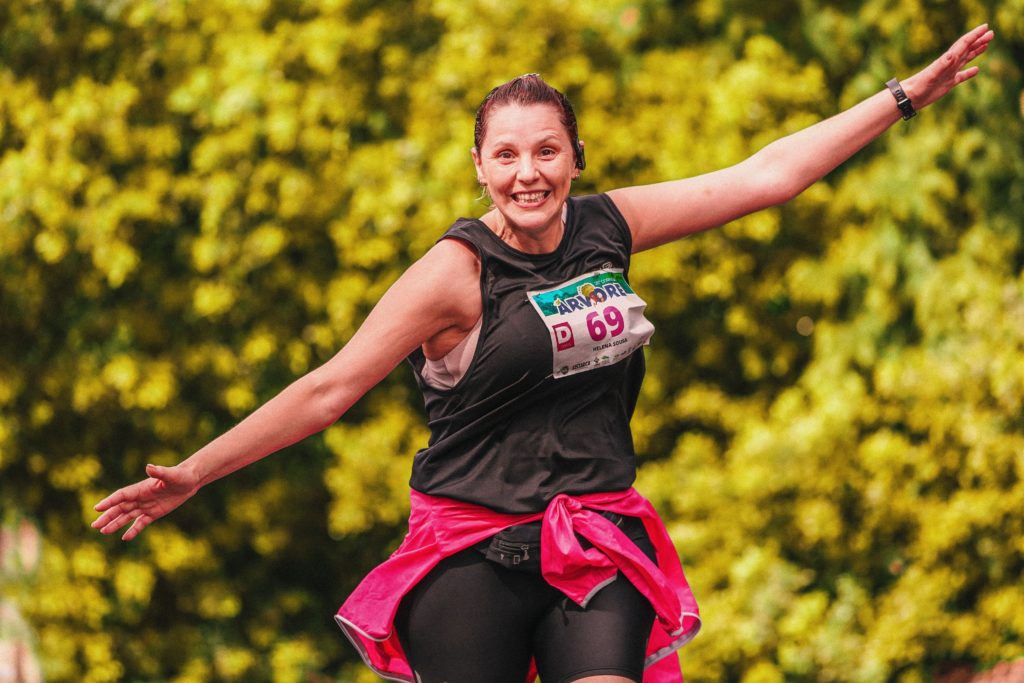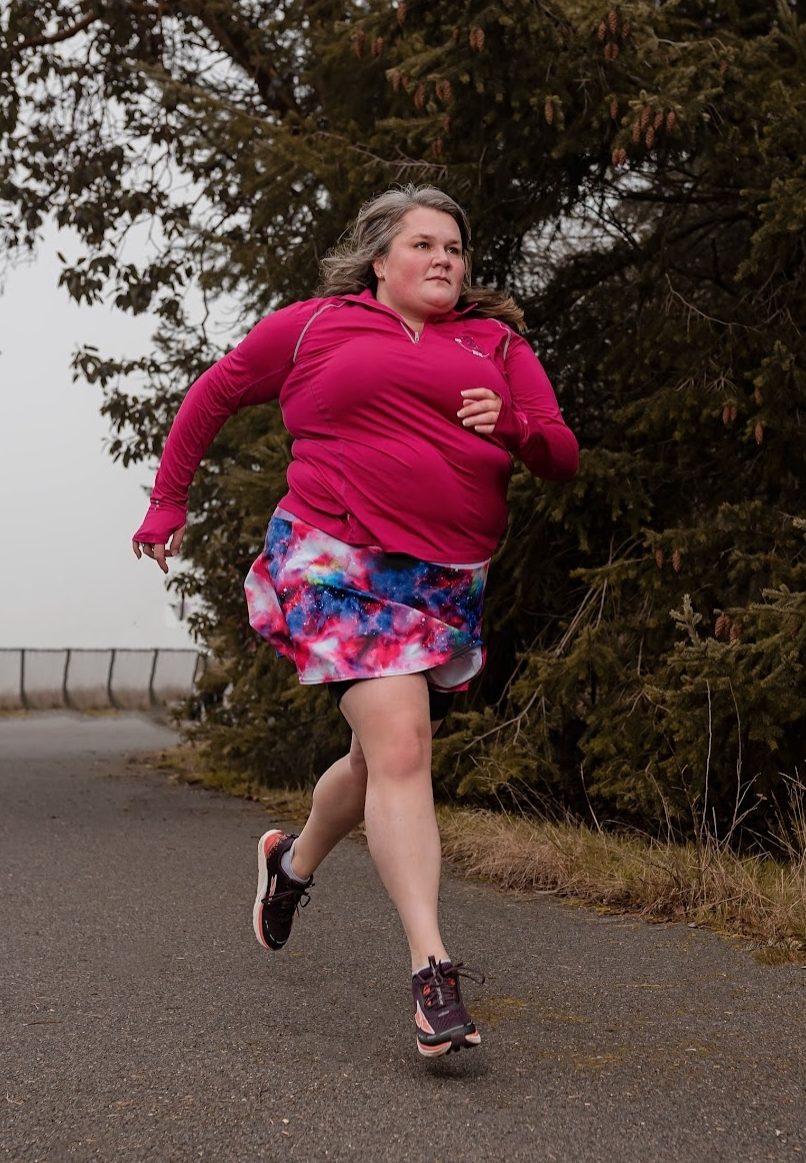Are You A Runner? Yes, Is The Answer.

In online running groups, someone will say, “If you’re not running faster than 10-minute miles, are you a runner?” This mindset is baffling, not to mention limiting. For someone to gate-keep this sport in that way means that only a certain type of runner is acceptable within the community. However, time and age are constants, and injury is a common function of both. What happens if a runner gets injured and has to start back to running at an 11-minute mile? Is the running they do, as they’re healing and coming back from injury, not valid running? Is a runner only valid if their miles are faster than 10 minutes?
Of course not. This isn’t even a question. There are thousands of people who don’t run faster than 10-minute miles, and their running is 100% valid.
Are You A Runner?
Getting down to the mechanics of it, running is simply a movement. Consider Olympic race walking, for example. In race walking, the athlete must maintain contact with the ground at all times. In running, there is a small hop that means the athlete is airborne for a short period of time in between ground contact. That airborne hop is what makes running, running. It’s not pace, it’s not distance, and it certainly is not body size.
The running community, as a whole, is usually welcoming and encouraging. However, there are many runners, and people who want to become runners, who are intimidated by prevailing messages such as the comment above. That and the image of the thin, leggy elites who are pictured in running magazines, which makes it seem like only a certain body type has “earned” the right to call themself a “runner.” Oh, and the comments from fellow runners, like, “You run? Aren’t you too big to run?” Or, “You shouldn’t run, you’ll ruin your knees,” which often comes from non-runners and even healthcare professionals, and is often aimed at runners in larger bodies.
Yes, it is true that runners in larger bodies tend to be slower than smaller-bodied runners. It makes sense that propelling a larger object forward would take more energy and time. But not all larger-bodied runners are slower, and not all slower runners are in larger bodies. And it doesn’t matter anyway, because the point here is that running is simply a hop from one foot to the other. Anyone who wants to hop, who is capable of that airborne moment, can call themselves a runner.
Every Body Can Run
This is a good place to mention the ableist narrative that “every body can run.” No, not every body can run, because according to the definition provided above, it does require the ability to move two legs and feet through the air. Athletes who use mobility aids, however, are often able to take part in races that have taken steps to be inclusive, whether with accessible trails or with time limits. So even though the movement of running is not necessarily accessible to all bodies, there are ways to make the running community accessible to all.
How does someone in a larger body, or a slower runner, begin to accept that the running community is a place where they belong? First of all, even the elites would agree that running is all about mindset. Accepting that running is going to look and feel different for each person is a great place to start. Someone who starts running at a 15-minute pace does not need to automatically feel defeated that they don’t run faster. Over time, they may get faster, but that doesn’t mean they’re any more of a runner. And too often, runners begin running without an idea of what an appropriate rate of perceived effort should be. Very often, they run too fast and too hard off the bat. Starting slowly, even if it feels like walking pace (that hop means it’s running!), is imperative for a runner to keep running long term.
In addition to changing mindset about what running looks and feels like, new runners should also consider the run/walk method. Popularized by Olympian Jeff Galloway, the run/walk method is simply a way to organize rest breaks within the run. The breaks allow for increased endurance, and, often, speed (especially in the long run). Using timed intervals of running and walking is a great way to ease into running – and yes, run/walkers still count as runners, and thousands, if not millions, of runners around the world use this method in races.
The Answer To Are You A Runner? Yes, You Are.
So, to recap: slower runners, and runners in larger bodies, are absolutely runners. Running is not defined by pace, distance, or body size. The activity is simply a hop from one foot to the next. New runners should begin to change their mindset about what running is, who can do it, and how it feels in their bodies; it should never hurt during a run, and if it does, stop and see a professional. Run slowly at first, at a very low rate of perceived effort, and give run/walk intervals a try.
New runners, or runners in larger bodies, who have felt like they have experienced gatekeeping in the running community, are not alone. Most of us, who do not look like the stereotypical image of a runner, or who do not run like the elites, have experienced it. Just know that there are communities for the odd ones out – the slow runners, the larger-bodied runners, the run-walk runners. There are places for these runners to learn more about how to run their way, in the bodies they have now. These people do have a place here. They DO belong.
Editor’s Note: One such community is the Fat Athletes group on Facebook, run by the author and open to all athletes, as well as people who move but have not accepted that they are athletes (yet). This group centers the lived experience of fat people. This means that posts often discuss fighting weight stigma and building inclusivity in the sports community. All bodies are welcome, we just ask that posters not discuss weight or weight loss when posting about activities and goals.

Marci Braithwaite is an RRCA- and USATF-certified running coach who focuses on beginner runners and athletes in larger bodies using Size-Inclusive and HAES-aligned principles. She has completed over 100 races of various distances in her 12 years of running, including a marathon, and she has her sights set on completing a 50k in 2023





